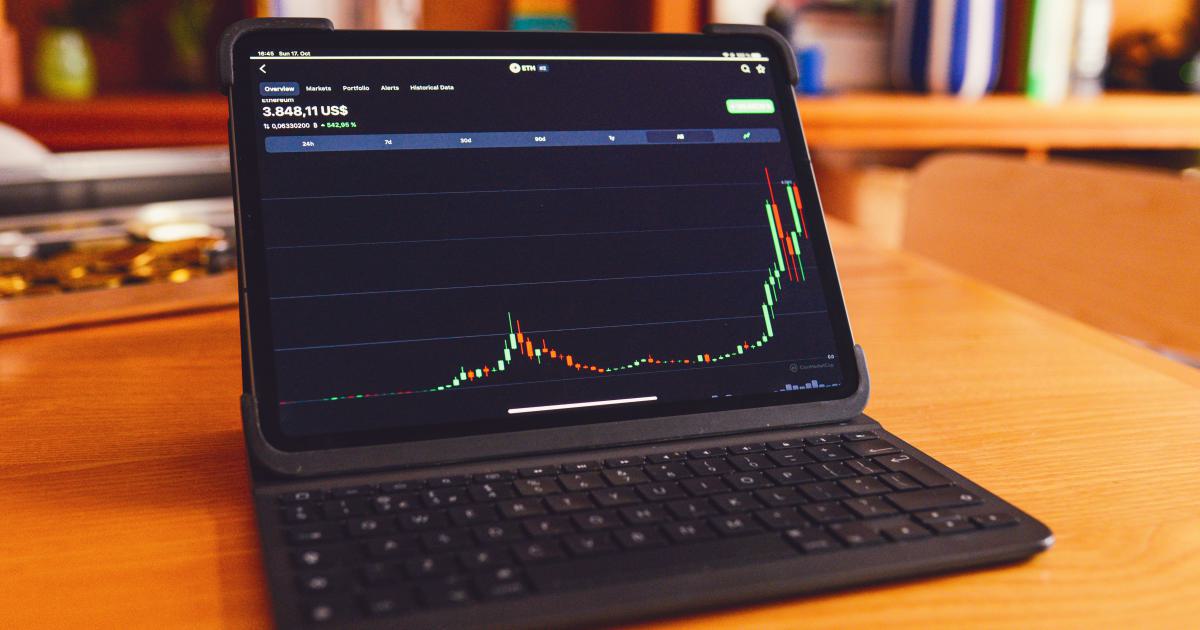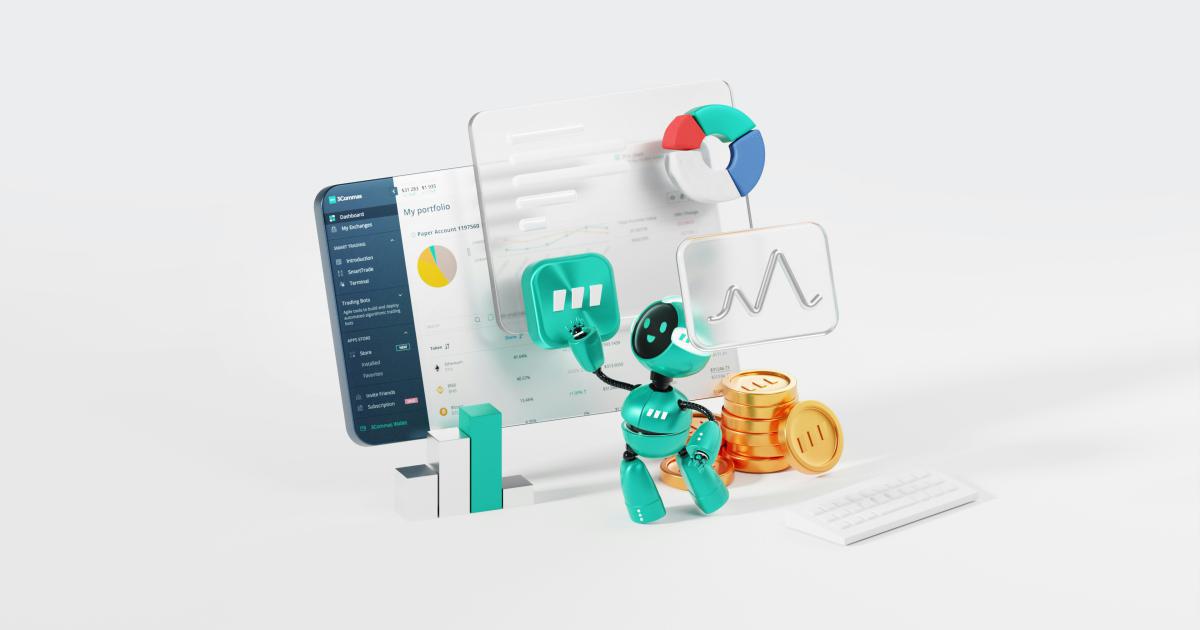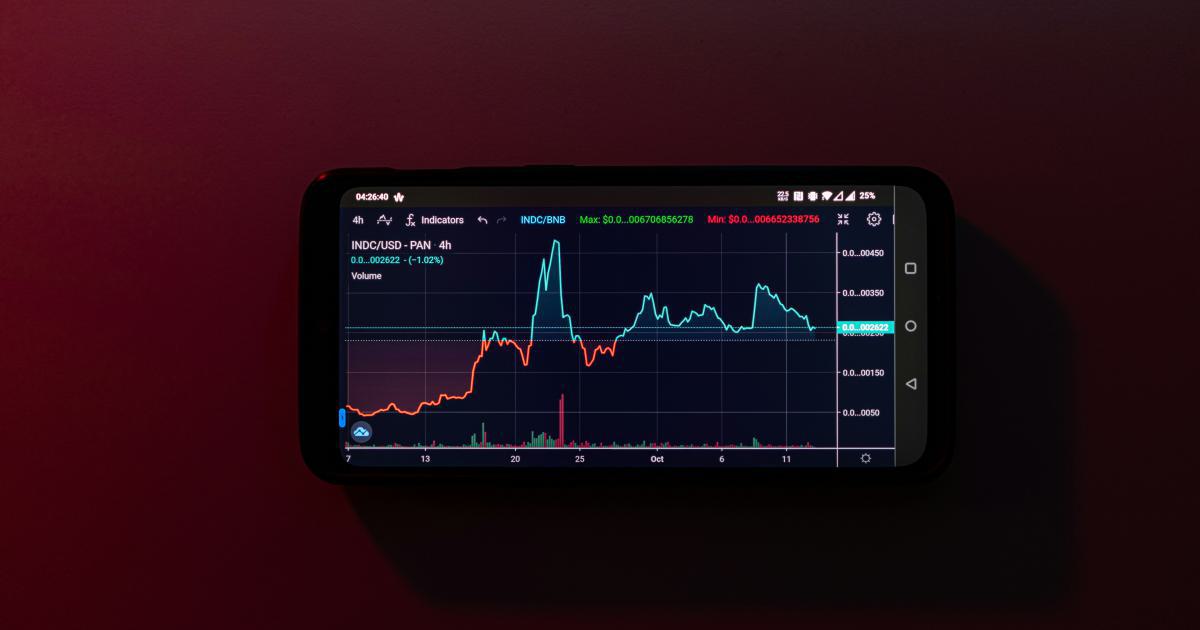Navigating the Volatile Crypto Markets Like a Pro

In today's fast-paced financial landscape, investors and traders are constantly seeking ways to excel in volatile crypto markets like pro. The cryptocurrency market is notorious for its rapid price swings, unforeseen news events, and unpredictable investor sentiments. Whether you are a seasoned trader or a curious newcomer, understanding the inner workings of these markets and equipping yourself with robust strategies is essential to navigate this complex environment. This comprehensive guide breaks down essential concepts, technical methods, risk management strategies, and forward-looking insights that empower you to tackle crypto market volatility with confidence and precision.
Cryptocurrency markets have grown exponentially over the past decade, drawing attention from institutional investors, retail traders, and regulators alike. With the rise of digital currencies such as Bitcoin, Ethereum, and a host of alternative coins, the need to understand how volatility influences decision-making has never been more apparent. Throughout this article, we will delve deep into technical analysis techniques, explore case studies of market behavior during periods of extreme fluctuations, and provide actionable advice on risk management tailored for volatile crypto markets like pro.
In the upcoming sections, we aim to demystify the intricate layers of trading psychology, market sentiment, and algorithmic patterns that drive price movements in the crypto world. Whether it’s deciphering complex technical indicators or interpreting market fundamentals, you will find valuable insights that can be integrated into your trading toolkit. Let’s embark on a journey to gain mastery over one of the most unpredictable and exhilarating segments of modern finance.
Understanding Crypto Market Volatility
Market volatility in the cryptocurrency domain is driven by an array of factors ranging from technological developments and regulatory updates to investor sentiment and global economic shifts. This section examines the foundations of market volatility and why understanding these dynamics is crucial for anyone aiming to trade like a pro in volatile crypto markets like pro.
Origins of Volatility in Crypto Markets
Cryptocurrencies are inherently volatile due to several unique characteristics. Unlike traditional asset classes, the market for digital currencies remains relatively nascent and less regulated. This leads to sharp swings caused by speculative trading, sudden shifts in investor sentiment, and the scaling challenges faced by blockchain networks. Additionally, because the market operates 24/7 without centralized oversight, the window for sudden and dramatic fluctuations expands significantly.
For instance, regulatory announcements from governments can trigger immediate reactions, often causing market crashes or surges. A tweet from a notable public figure or controversial news about security breaches can also spark rapid price changes. Moreover, the decentralized nature of most cryptocurrencies means that large holders – often known as whales – can manipulate prices by executing large orders unexpectedly.
Psychological Influences and Investor Behavior
Investor psychology plays a pivotal role in accentuating volatility. The fear and greed cycle is especially pronounced in crypto markets. During bullish trends, optimism often turns into overconfidence, with traders making high-risk bets expecting continued upward momentum. Conversely, bearish periods can lead to panic selling, further exacerbating market declines. Understanding these emotional triggers can help traders develop strategies to counteract their own biases and make more rational decisions.
Many traders have witnessed the phenomenon wherein a slight dip triggers a wave of stop-loss orders, causing a cascading effect on prices. In such scenarios, traders who anticipate these mechanisms can design counter-strategies, such as setting limit orders or employing hedging techniques. This awareness of the psychological underpinnings of the market not only demystifies rapid price reversals but also provides a framework to predict potential market moves.
Technological and Network Factors
Beyond investor sentiment, technological aspects and network performance contribute significantly to crypto volatility. For example, network upgrades, blockchain forks, and changes in mining algorithms can lead to temporary disruptions or shifts in market dynamics. When a network transition occurs, market participants often revalue their estimations of a cryptocurrency's future potential based on its technological roadmap, resulting in unexpected price adjustments.
Factors like network congestion, which can lead to increased transaction fees and slower processing times, also affect market confidence. When users encounter these technical hurdles, the resulting uncertainty can lead to a sell-off as confidence wanes. Conversely, improvements in scalability and security can spur renewed investor confidence, propelling prices upward.

Impact of Global Economic Trends
The interconnected nature of global markets means that economic trends and geopolitical events can have ripple effects on crypto prices. Economic crises, inflation, and changes in interest rates are not isolated from the crypto ecosystem. During high inflation periods, for instance, investors may flock to cryptocurrencies as a hedge against fiat currency devaluation, leading to inflated growth spurts that can later be corrected abruptly.
Similarly, in times of global uncertainty or war, markets react rapidly. In such conditions, the lack of established regulatory frameworks in crypto can lead to even more pronounced swings as market participants scramble to adjust their strategies. This unpredictability emphasizes the need for traders to stay updated on global developments and to integrate macroeconomic analysis into their trading strategies.
The Role of Market Liquidity
Market liquidity is another critical factor affecting volatility. High liquidity often implies smoother price movements because a large number of buy and sell orders help absorb shocks. However, many cryptocurrencies suffer from low liquidity, meaning that even relatively modest trades can shift market prices dramatically. In low liquidity environments, traders must exercise caution, as a single large order might trigger a domino effect, wiping out significant portions of market value.
The interplay between liquidity and volatility is particularly notable during periods of market stress. When liquidity evaporates during panic selling, prices can decline precipitously. Conversely, in a highly liquid market, the depth of available orders provides a buffer, dampening the volatility typically observed during major news events or market corrections.
Understanding these multifaceted aspects of volatility is the first step in equipping yourself to navigate the tumultuous waters of crypto trading. By dissecting these underlying causes, traders can begin to build a resilient strategy that helps them anticipate and react to market movements with a cool, professional demeanor.
Technical Analysis in a Volatile Environment
Technical analysis remains one of the most favored tools among traders striving to act volatile crypto markets like pro. Using historical price patterns, volume data, and various technical indicators, traders can identify potential entry and exit points even amidst the chaos of a rapidly shifting market. This section provides a deep dive into technical analysis methodologies that cater specifically to the unpredictable nature of cryptocurrencies.
Chart Patterns and Trend Analysis
Charts offer a visual representation of market behavior over time. By studying these charts, traders can identify recurring patterns, such as head and shoulders, double tops and bottoms, and triangles, which often signal reversals or continuation of trends. Given the volatile nature of cryptocurrencies, these patterns can sometimes offer early clues about impending market direction changes.
For instance, a common strategy is to use moving averages to smooth out price movements. Short-term moving averages can act as support or resistance levels and provide signals when they cross longer-term averages. Understanding how these averages interact in the current market context can help traders decide whether to hold, buy, or sell.
Moreover, incorporating oscillators like the Relative Strength Index (RSI) or the Moving Average Convergence Divergence (MACD) can enhance a trader's ability to spot overbought or oversold conditions. These tools are particularly beneficial in a volatile market, where swift reversals are not uncommon. During periods of high volatility, setting tighter stop-loss orders and closely monitoring these indicators can prevent substantial losses.
Volume Analysis and Market Confirmation
Volume is an essential measure in technical analysis, as it represents the strength behind a move. A price change accompanied by high volume typically confirms the validity of the move, whereas a price change on low volume might suggest a lack of conviction among traders. This distinction is crucial in crypto markets where false breakouts can occur frequently.
Using volume analysis, traders can assess whether market participants are genuinely supporting a price move. For example, a sharp price uptick on low volume may indicate that the trend is not sustainable. Conversely, a decline in price with high volume might suggest that the market sentiment is shifting unfavorably and that further losses could be imminent. By combining volume metrics with other technical indicators, traders can build a more complete picture of market dynamics.
Algorithmic Tools and Automated Strategies
With the advent of sophisticated trading bots and automated strategies, technical analysis in volatile crypto markets has evolved significantly. Algorithms can be programmed to scan multiple markets and timeframes simultaneously, detecting patterns and executing trades faster than any human could. These developments have become indispensable for traders aiming to operate like pro even in unstable market conditions.
Automated trading systems typically rely on backtesting to ensure that their algorithms perform well under various scenarios, including those characterized by high volatility. Backtesting involves running the trading algorithm on historical data to see how it would have fared, thereby fine-tuning its parameters for live trading. Many traders combine human oversight with algorithmic trading to benefit from both intuition and high-speed data analysis.
However, it is important to note that while automated systems can reduce the emotional impact of trading, they are not infallible. During extreme market conditions, algorithms may struggle to adapt to unforeseen events or sudden regulatory changes. Consequently, maintaining a balanced approach that integrates both manual analysis and automated systems is essential for long-term success.
Integrating Technical Analysis with Risk Management
No matter how refined your technical analysis techniques are, they must be integrated with robust risk management strategies. Volatile crypto markets can quickly sweep even the best-laid plans into chaos if proper precautions are not taken. Tools such as stop-loss orders, position sizing, and portfolio diversification are critical in protecting your investments against sudden adverse movements.
Traders are advised to avoid over-leveraging, as margin calls during periods of high volatility can exacerbate losses. By setting predefined risk limits and ensuring that only a small portion of the portfolio is allocated to any single trade, you can mitigate the potential impact of market fluctuations. Combining technical insights with disciplined risk management practices creates a resilient framework that helps you navigate the complexities of crypto trading with confidence.

Case Study: A Technical Perspective on a Wild Crypto Rally
Consider the case of a popular altcoin that experienced an explosive rally followed by a dramatic reversal. Prior to the rally, technical indicators showed a bullish crossover in the MACD coupled with a surge in trading volume. Many traders interpreted these signals as a sign of strength and quickly entered long positions. However, as the price continued to climb, the RSI indicated that the asset was entering overbought territory.
Shortly after reaching a critical threshold, a sudden sell-off occurred, wiping out gains accumulated during the rally. Those who had set trailing stop-loss orders managed to secure profits or mitigate losses, while others caught unprepared suffered significant setbacks. This example underscores the importance of combining various technical tools with vigilant risk management practices, ensuring that even in the most volatile crypto environments, you can safeguard your portfolio and make swift, informed decisions.
Fundamental Analysis: Beyond the Numbers
While technical analysis offers a window into market trends and price patterns, fundamental analysis provides insight into the underlying factors that drive the crypto ecosystem. This section focuses on examining the real-world factors behind the numbers and how integrating both technical and fundamental approaches can equip you to navigate volatile crypto markets like pro.
Assessing Project Viability and Technology
The viability of a cryptocurrency is not solely determined by its market performance. Investors must also consider the technology behind the coin, the team driving its development, and the broader goals of the project. A strong technological foundation often translates into resilience during market downturns. Researching a cryptocurrency’s whitepaper, examining its blockchain infrastructure, and understanding the security mechanisms in place are all critical components of fundamental analysis.
For instance, many investors place great importance on projects that offer innovative solutions, such as improved scalability, faster transaction times, and novel consensus mechanisms. Blockchain projects that are transparent about their developmental roadmap and actively engage with their community tend to foster a loyal investor base. Such projects are usually better equipped to withstand periods of negative market sentiment, helping them bounce back more robustly when conditions improve.
Regulatory Environment and Market Sentiment
The regulatory landscape represents another critical aspect of fundamental analysis. As governments worldwide grapple with the challenges posed by digital currencies, any changes in policy, taxation, or legal frameworks can dramatically impact the market. A favorable regulatory environment can boost investor confidence and stimulate market growth, whereas stringent regulations might lead to sharp corrections.
Analyzing governmental stances, monitoring legislative changes, and staying informed about geopolitical developments are all essential practices. Investors who are proactive in tracking these elements can adjust their strategies accordingly. Moreover, understanding the interplay between regulation and market sentiment allows traders to anticipate potential volatility spikes triggered by regulatory announcements.
Macro-Economic Influences and Industry Trends
Cryptocurrencies do not exist in a vacuum; they are part of a larger economic ecosystem. Global economic trends such as interest rate changes, inflation rates, and investor confidence in traditional markets can influence crypto prices. In times of economic uncertainty, cryptocurrencies may serve as a hedge against declining fiat currencies, while periods of economic stability might drive capital into more established asset classes.
Furthermore, industry-specific trends such as the rise of decentralized finance (DeFi), non-fungible tokens (NFTs), and blockchain interoperability can offer insights into future market directions. By evaluating how these trends are likely to impact the broader crypto market, investors can position themselves advantageously. It is imperative to combine qualitative insights from industry analysis with quantitative data to form a well-rounded view of the market environment.
Integrating Fundamental and Technical Analysis
The most successful traders often leverage a hybrid approach, integrating both technical and fundamental analysis to arrive at more informed decision-making. Fundamental analysis allows you to gauge the intrinsic value and potential growth of a cryptocurrency while technical analysis provides clues on market timing and sentiment. This combined strategy is particularly useful when dealing with the erratic price swings typical of volatile crypto markets like pro.
For instance, if technical indicators suggest an upcoming price reversal based on historical patterns, and fundamental research shows positive developments in a project's technology or regulatory environment, this confluence of evidence can signal a strong trading opportunity. Conversely, when technical signals are in conflict with fundamental data, it may be prudent to delay a trade or re-evaluate your strategy. The key lies in maintaining a disciplined approach that leverages the strengths of both methodologies.

Challenges in Fundamental Analysis
Despite the clear benefits, fundamental analysis in the cryptocurrency space is not without its challenges. The rapid pace of technological change and the proliferation of new projects make it difficult to keep up with all the variables. Misinformation, speculative hype, and a lack of standardized reporting further complicate the process. As a result, investors must exercise due diligence and remain skeptical of claims that seem too good to be true.
Developing a systematic approach to fundamental analysis involves setting criteria for evaluating projects, such as the experience of the development team, community engagement, tangible use cases, and security protocols. By establishing a robust framework for analysis, traders can filter out noise and focus on projects with genuine potential. This systematic approach is crucial in an environment where rapid innovation is the norm and volatility can be both an opportunity and a risk.
Risk Management and Trading Strategies
Achieving success in volatile crypto markets like pro is not solely about making winning trades – it is equally about managing risks effectively and sustaining your capital over the long term. This section delves into comprehensive risk management techniques and trading strategies that can serve as your toolkit in navigating the choppy waters of cryptocurrency trading.
Setting Clear Goals and Limits
Before entering any trade, it is imperative to establish clear financial goals and risk limits. By defining the maximum amount you are willing to lose on a single trade, you create a safety net that encourages rational decision-making even during periods of high stress. Establishing realistic profit targets can also prevent greed from clouding judgment and leading to overexposure.
One practical approach is to utilize stop-loss orders, which automatically sell your position once it hits a predetermined price level. This method is vital in volatile markets, where sudden price drops can otherwise result in substantial losses. Additionally, using trailing stops allows you to capture gains while still providing protection against rapid reversals. A disciplined approach to setting these parameters reinforces a risk-managed trading environment.
Diversification and Portfolio Management
Diversification is another cornerstone of risk management, particularly in the realm of cryptocurrencies. By spreading investments across different assets, sectors, and strategies, you can mitigate the impact of a single market event on your overall portfolio. Diversifying not only reduces potential losses but also provides multiple avenues for growth should different segments of the market perform well at various times.
A balanced portfolio might include a mix of high-cap cryptocurrencies, promising altcoins, and tokens associated with emerging sectors such as DeFi or NFTs. Additionally, some investors choose to allocate a portion of their portfolio to stablecoins, which can act as a hedge during periods of extreme volatility. The key is to periodically reassess your portfolio composition to ensure it aligns with your evolving risk tolerance and market conditions.
Advanced Trading Techniques and Tools
For traders looking to refine their edge, there are several advanced techniques that can be employed. Options trading, margin trading, and algorithmic strategies each offer unique advantages in navigating the turbulent crypto landscape. Options trading, for example, allows you to hedge against adverse market moves while also profiting from volatility. Margin trading can amplify returns on winning trades if used judiciously, though it also increases the potential for significant losses if not managed properly.
Algorithmic trading, as mentioned earlier, offers the possibility of executing trades at speeds beyond human capability. Developing your own algorithm or utilizing third-party platforms can streamline the trading process and reduce the emotional burden associated with manual decision-making. Leveraging technical tools such as real-time data feeds, sentiment analysis software, and advanced charting platforms also empowers traders to better anticipate market movements.
Psychological Resilience in Trading
Risk management goes beyond numbers—it is also about cultivating the mental resilience necessary to withstand market storms. Emotional discipline is paramount in volatile scenarios, where fear and greed can lead to impulsive decisions. Building a trading plan, maintaining a trading journal, and even engaging in regular self-assessment can bolster your psychological resilience. Over time, a disciplined mindset not only protects your capital but also paves the way for a sustained trading career.
Successful risk management strategies often emphasize the need to accept losses as part of the journey. No strategy can eliminate risk entirely, but by focusing on consistent performance and learning from mistakes, you gradually build the expertise required to navigate even the most turbulent market conditions.
Real-World Examples and Case Studies
Theory meets practice in this section as we explore several real-world examples and case studies that illuminate how proactive traders have successfully navigated volatile crypto markets like pro. By examining these case studies, you can draw actionable insights and develop a deeper understanding of how various strategies perform under real market conditions.
Case Study 1: The 2020 Crypto Crash and Recovery
In early 2020, the global financial landscape was rocked by a confluence of unforeseen events. Amid the economic uncertainty triggered by the pandemic, cryptocurrencies experienced a significant crash. Many traders were caught off-guard by the sudden downturn, and some saw their portfolios diminish dramatically within hours.
However, seasoned traders with robust risk management practices were able to anticipate the crash through a combination of technical signals and fundamental insights. By setting stop-loss orders at strategic levels and diversifying their holdings to include more stable assets, these traders managed to preserve capital during the worst of the downturn. Once markets began to recover, those who had maintained liquidity and monitored market signals were positioned to re-enter at opportune moments, benefiting from the subsequent rally. This example underscores the importance of being prepared and employing robust strategies in the face of unexpected downturns.
Case Study 2: Navigating the Regulatory Maze
Another illustrative scenario involved a major regulatory announcement in a leading market. When news broke about potential restrictions on a popular cryptocurrency exchange, market sentiment turned sharply negative. Prices plummeted as uncertainty gripped investors. However, a group of informed traders who had been tracking regulatory developments closely had diversified their portfolios and reduced exposure to exchanges sensitive to such news.
These traders had also identified alternative platforms with stronger regulatory compliance and migrated their trading activities accordingly. As the market stabilized and the regulatory environment became clearer, these traders not only minimized losses but also capitalized on the volatility by engaging in short-term trading strategies. The incident highlighted the pivotal role of staying informed on macro-level developments and adjusting strategies to protect investments.
Lessons from Historical Volatility Events
Beyond these individual case studies, numerous historical trends provide valuable lessons. For instance, the massive price rallies and subsequent corrections seen in various market cycles have taught traders the importance of not getting swept up by hype. Patience, thorough research, and adherence to a sound trading plan are recurring themes in success stories from volatile crypto markets like pro.
Analyzing these events offers practical guidance: always be prepared for the unexpected, use volatility to your advantage by adapting flexible strategies, and never let market emotions dictate your investment decisions. These real-world lessons serve as a reminder that while the crypto market is rife with opportunity, meticulous planning and sound risk management are indispensable.
Future Trends and Final Thoughts
As the cryptocurrency market continues to evolve, so too will the strategies and technologies used to navigate it. Emerging trends promise to reshape the landscape, offering both new opportunities and novel challenges for traders aiming to operate volatile crypto markets like pro.
The Growing Role of Decentralized Finance
Decentralized finance (DeFi) is poised to profoundly change how investors and traders interact with the crypto market. DeFi platforms facilitate a wide range of financial services—lending, borrowing, yield farming, and more—without the need for traditional intermediaries. As these platforms mature, they are likely to introduce new forms of volatility. However, they also provide innovative solutions for managing risk and enhancing liquidity, making them an exciting frontier for forward-thinking traders.
Technological Advancements and Their Impacts
Blockchain interoperability, improvements in scalability, and the development of second-layer solutions are set to redefine market dynamics. As these technologies mature, we can expect increased efficiency and reduced transaction costs, potentially leading to changes in volatility patterns. Traders who stay abreast of these technological shifts will be better positioned to predict market movements and adjust their strategies accordingly.
Evolving Regulatory Landscapes
With regulatory bodies worldwide gradually simplifying and clarifying their approaches to cryptocurrencies, the future may hold a more stable environment for digital assets. However, the path will be marked by transitional periods where regulatory uncertainty could spark increased volatility. Staying informed about these changes is crucial, as policy shifts can open up new opportunities for savvy investors while posing risks to those unprepared for rapid changes.
Final Thoughts: A Roadmap to Success
Navigating the volatile crypto markets like pro requires a multi-faceted approach that combines technical analysis, fundamental insights, and robust risk management. It is a journey that demands continuous learning, flexibility, and emotional resilience. As you move forward, remember that both successes and setbacks provide valuable learning opportunities. By maintaining a disciplined approach and integrating diverse strategies, you can build a resilient trading practice capable of thriving in even the most turbulent market conditions.
Looking ahead, the crypto market promises both challenge and reward. With increasing institutional involvement, technological breakthroughs, and evolving regulatory frameworks, the landscape is set to become even more dynamic. Traders who remain adaptable, well-informed, and proactive in managing risks will be best positioned to capitalize on these changes and secure long-term success.
In summary, whether you are employing chart pattern analysis, leveraging automated trading systems, or diversifying your portfolio to hedge against volatility, the overarching theme remains clear: success in the digital financial arena hinges on preparation, education, and strategic execution. By integrating the techniques discussed in this comprehensive guide, you can navigate the volatile crypto markets like pro, transforming challenges into opportunities in a realm where uncertainty is the only constant.
Unlock the Power of Crypto Trading with Binance
Tired of missing out on lucrative trading opportunities? Elevate your game with Binance, the leading crypto exchange trusted by millions worldwide.
With lightning-fast execution, institutional-grade security, and a user-friendly interface, Binance empowers you to seize market moves with confidence. Plus, enjoy access to 100+ cryptocurrencies and cutting-edge tools. Join now and experience the future of trading.
Unmatched Trading Power with Binance
Are you ready to take your trading game to new heights? Binance offers a cutting-edge platform for seamless cryptocurrency transactions.
With lightning-fast execution, top-tier security, and a vast selection of coins, you'll have all the tools you need to maximize your profits. Join now and experience the future of trading.


